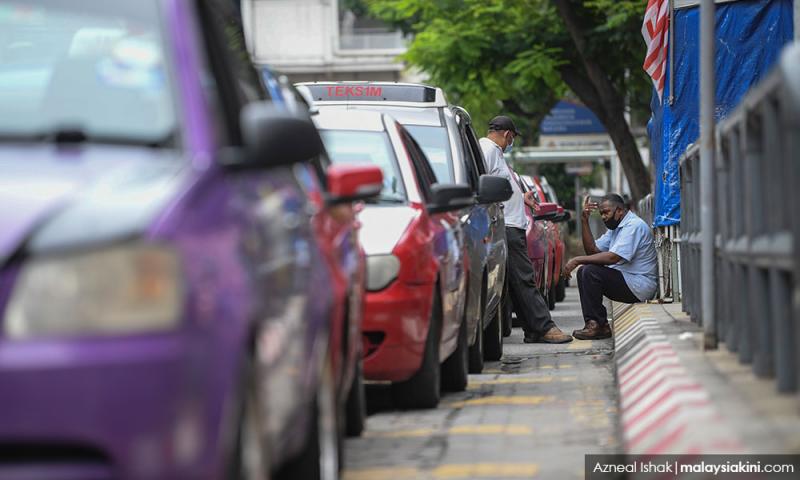LETTER | Some taxi driver groups making preposterous demand
LETTER | Recently, the president of Gabungan Teksi SeMalaysia Kamarudin Mohd Hussain claimed that the demand for traditional taxi service has increased by 18 percent as passengers are unhappy after operators of e-haling services have raised charges substantially.
He called for metered taxi rates to be increased to keep pace with the rise of living costs and vehicle maintenance but did not specify any amount although he was able to deduce that demand for traditional taxi service has risen by 18 percent.
In 2009, the Commercial Vehicle Licensing Board increased budget taxi rates from RM2 starting fare to RM3, RM8 per hour to RM17.14 and 66 sen per km to 87 sen. In 2015, the Land Public Transport Commission raised them to RM25 per hour and RM1.25 per km.
The last round of revision had factored in the higher costs of vehicle maintenance, not just in 2015, but also for the subsequent years. Hence, the starting fare for Teksi 1Malaysia (TEKS1M) using the Proton Exora MPV was higher at RM4, plus RM30 per hour and RM1.50 per km.
But high fares for taxis backfired badly, particularly for TEKS1M. It came at a time when e-hailing services using private cars became very popular because of much lower fares and much better service, as e-hailing drivers behave themselves or are barred from picking up passengers.
Although e-hailing fares have now been increased considerably, their charges are still lower than metered taxi rates. Therefore, any hike in metered rates could result in half of existing taxi passengers migrating to e-hailing services.
Taxi drivers ought to take a leaf from hawkers who are free to raise prices but won’t, knowing that higher profits would lead to lower sales and reduced income. Similarly, e-hailing charges may be lower, but private car drivers earn more by running additional trips than taxi drivers.
Instead of lowering fares to compete more effectively with e-hailing services, Kamarudin has done the exact opposite by calling on the government to increase taxi fares.
He has also proposed to the Transport Ministry to get a government-linked company (GLC) to set up a subsidiary to create a mobile app for both taxi and e-hailing services, not realising that GLCs are not under the purview of the ministry.
Also, it just won’t happen because it is not a viable venture or needed, given the number of mobile apps available in the market and even larger numbers that have failed. Moreover, it is not a business for the fainthearted or for any government company or agency to dabble with.
Even Uber or Grab has yet to make any profit after losing billions of dollars every year, although these companies are still worth tens of billions of dollars as they have the potential to be profitable by tapping their huge customer database and offering a great variety of services.
Last month, a taxi drivers’ group, Penyatuan Pemain Industri Pengangkutan Darat Malaysia submitted a memorandum to the prime minister’s office demanding the government develop its own e-hailing app for the use of all drivers to replace those owned by private companies.
Clearly, recalcitrant taxi drivers are deluded, as they have been over the past decades. I should know, having mixed with many as a metered taxi driver for a decade and later conducted training for Teksi Wanita, non-metered taxi drivers in Pangkor and 1,000 TEKS1M drivers.
Kamarudin estimated that 12,000 out of 40,000 taxi drivers nationwide had switched to driving private vehicles and picking up passengers through e-hailing. This does not mean they are still 28,000 taxi drivers left as most have stopped driving taxis, leaving only a few thousand.
In any case, there is nothing to stop the remaining few to migrate to driving private cars instead of complaining of unfair competition as if the world owes them a living. Those willing to work hard could easily earn RM7,000 a month driving trailers.
In 2017 for example, Rokiah Salim, a 51-year-old single mother was reported to be earning up to RM7,000 a month by picking up containers from Penang Port and transporting them to a depot to be repaired. But taxi drivers choose to take it easy, preferring to live from hand to mouth.
Those who stubbornly cling to “kais pagi makan pagi, kais petang makan petang” should not blame the government, competitors or others for their predicament. They just cannot have their cake and eat it too.
The views expressed here are those of the author/contributor and do not necessarily represent the views of Malaysiakini.
RM12.50 / month
- Unlimited access to award-winning journalism
- Comment and share your opinions on all our articles
- Gift interesting stories to your friends
- Tax deductable
